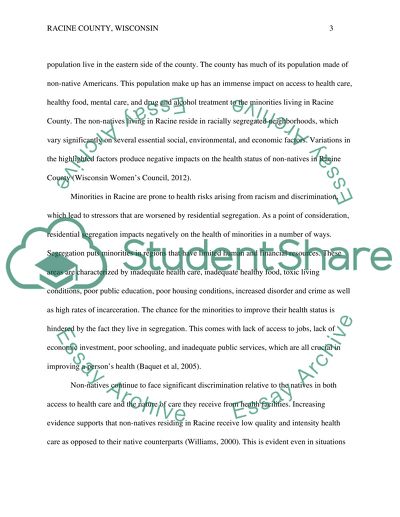Cite this document
(“Racine County, Wisconsin Research Paper Example | Topics and Well Written Essays - 1000 words”, n.d.)
Retrieved from https://studentshare.org/nursing/1493733-social-determinants-of-health-racism-and
Retrieved from https://studentshare.org/nursing/1493733-social-determinants-of-health-racism-and
(Racine County, Wisconsin Research Paper Example | Topics and Well Written Essays - 1000 Words)
https://studentshare.org/nursing/1493733-social-determinants-of-health-racism-and.
https://studentshare.org/nursing/1493733-social-determinants-of-health-racism-and.
“Racine County, Wisconsin Research Paper Example | Topics and Well Written Essays - 1000 Words”, n.d. https://studentshare.org/nursing/1493733-social-determinants-of-health-racism-and.


